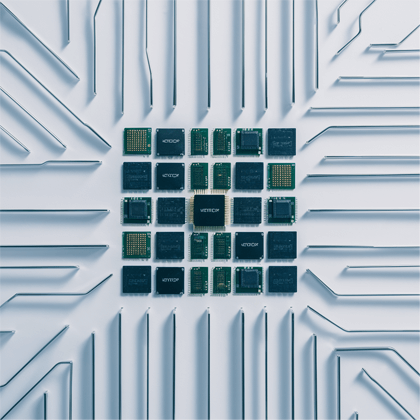- All categories
- Integrated Circuits (ICs)
- Development Boards, Kits, Programmers
- Discrete Semiconductor Products
- Power Supplies - Board Mount
- RF and Wireless
- Sensors, Transducers
- Memory Cards, Modules
- Audio Products
- Circuit Protection
- Crystals, Oscillators, Resonators
- Filters
- Isolators
- Kits
- Maker/DIY, Educational
- Optoelectronics
- Power Supplies - External/Internal (Off-Board)
- Relays
- Resistors
- Test and Measurement
- Uncategorized
- Connectors, Interconnects
- Inductors, Coils, Chokes
- Motors, Actuators, Solenoids and Drivers
- Switches
- Cable Assemblies
- Embedded Computers
- Capacitors
- Fans, Thermal Management
- Transformers
- Battery Products
- Products
- All categories
-
Integrated Circuits (ICs)
-
Embedded
- FPGAs (Field Programmable Gate Array)
- Microcontrollers
- CPLDs (Complex Programmable Logic Devices)
- FPGAs (Field Programmable Gate Array) with Microcontrollers
- PLDs (Programmable Logic Device)
- Microcontrollers, Microprocessor, FPGA Modules
- System On Chip (SoC)
- Application Specific Microcontrollers
- DSP (Digital Signal Processors)
- Microprocessors
-
Interface
- Drivers, Receivers, Transceivers
- Sensor and Detector Interfaces
- Analog Switches - Special Purpose
- Analog Switches, Multiplexers, Demultiplexers
- CODECS
- Controllers
- Direct Digital Synthesis (DDS)
- Encoders, Decoders, Converters
- Filters - Active
- I/O Expanders
- Modems - ICs and Modules
- Modules
- Sensor, Capacitive Touch
- Signal Buffers, Repeaters, Splitters
- Signal Terminators
- Specialized
- Telecom
- Serializers, Deserializers
- UARTs (Universal Asynchronous Receiver Transmitter)
- Voice Record and Playback
- Memory
-
Power Management (PMIC)
- DC DC Switching Controllers
- Display Drivers
- Full Half-Bridge Drivers
- Gate Drivers
- LED Drivers
- Motor Drivers, Controllers
- Power Distribution Switches, Load Drivers
- Power Management - Specialized
- Power Supply Controllers, Monitors
- Special Purpose Regulators
- Supervisors
- Voltage Regulators - DC DC Switching Regulators
- Voltage Regulators - Linear
- Voltage Regulators - Linear + Switching
- AC DC Converters, Offline Switches
- Battery Chargers
- Battery Management
- Current Regulation/Management
- Energy Metering
- Hot Swap Controllers
- Laser Drivers
- Lighting, Ballast Controllers
- OR Controllers, Ideal Diodes
- PFC (Power Factor Correction)
- Power Over Ethernet (PoE) Controllers
- RMS to DC Converters
- Thermal Management
- Voltage Reference
- Voltage Regulators - Linear Regulator Controllers
- V/F and F/V Converters
- Specialized ICs
- Audio Special Purpose
- Clock/Timing
- Data Acquisition
- Linear
-
Logic
- Buffers, Drivers, Receivers, Transceivers
- Comparators
- FIFOs Memory
- Flip Flops
- Gates and Inverters
- Gates and Inverters - Multi-Function, Configurable
- Multivibrators
- Shift Registers
- Signal Switches, Multiplexers, Decoders
- Translators, Level Shifters
- Latches
- Specialty Logic
- Counters, Dividers
- Parity Generators and Checkers
- Universal Bus Functions
-
Embedded
-
Development Boards, Kits, Programmers
- Accessories
- Evaluation and Demonstration Boards and Kits
- Evaluation Boards - DC/DC & AC/DC (Off-Line) SMPS
- Evaluation Boards - Expansion Boards, Daughter Cards
- Evaluation Boards - LED Drivers
- Evaluation Boards - Sensors
- Evaluation Boards - Embedded - Complex Logic (FPGA, CPLD)
- Evaluation Boards - Embedded - MCU, DSP
- Programmers, Emulators, and Debuggers
- Software, Services
- Evaluation Boards - Analog to Digital Converters (ADCs)
- Evaluation Boards - Audio Amplifiers
- Evaluation Boards - Digital to Analog Converters (DACs)
- Evaluation Boards - Linear Voltage Regulators
- Evaluation Boards - Op Amps
- Programming Adapters, Sockets
- RF Evaluation and Development Kits, Boards
- RFID Evaluation and Development Kits, Boards
-
Discrete Semiconductor Products
- Power Supplies - Board Mount
-
RF and Wireless
- RF Amplifiers
- Attenuators
- RF Accessories
- RF Demodulators
- RF Detectors
- RF Front End (LNA + PA)
- RF Misc ICs and Modules
- RF Mixers
- RF Modulators
- RF Power Controller ICs
- RF Power Dividers/Splitters
- RF Receivers
- RF Shields
- RF Switches
- RF Transceiver ICs
- RF Transceiver Modules and Modems
- RF Transmitters
- RFID, RF Access, Monitoring ICs
- RFID Transponders, Tags
- RF Multiplexers
- RF Receiver, Transmitter, and Transceiver Finished Units
- RF Antennas
- RFI and EMI - Contacts, Fingerstock and Gaskets
- RFID Reader Modules
- RF Circulators and Isolators
- RF Directional Coupler
- Balun
- Subscriber Identification Module (SIM) Cards
- RFID Accessories
- RFID Antennas
-
Sensors, Transducers
- Current Sensors
- Magnetic Sensors
- Position Sensors
- Specialized Sensors
- Temperature Sensors
- Motion Sensors
- Multifunction
-
Optical Sensors
- Ambient Light, IR, UV Sensors
- Image Sensors, Camera
- Photodiodes
- Distance Measuring
- Photointerrupters - Slot Type - Transistor Output
- Phototransistors
- Reflective - Analog Output
- Reflective - Logic Output
- Photo Detectors - Logic Output
- Photointerrupters - Slot Type - Logic Output
- Photoelectric, Industrial
- Camera Modules
- Photo Detectors - Remote Receiver
- Sensor, Transducer Accessories
- Sensor, Transducer Amplifiers
- Color Sensors
- Encoders
- Encoders - Industrial
- Touch Sensors
- Pressure Sensors, Transducers
- Flow Sensors
- Gas Sensors
- Pressure Sensors, Transducers - Industrial
- Float, Level Sensors
- Magnets
- Proximity Sensors
- Flow Sensors - Industrial
- Humidity, Moisture Sensors
- Memory Cards, Modules
- Audio Products
- Circuit Protection
- Crystals, Oscillators, Resonators
- Filters
- Isolators
- Kits
- Maker/DIY, Educational
-
Optoelectronics
- Circuit Board Indicators, Arrays, Light Bars, Bar Graphs
- Fiber Optic Transceiver Modules
- LED Character and Numeric
- COBs, Engines, Modules, Strips
- Color LED Lighting
- Display Bezels, Lenses
- Fiber Optic Receivers
- Fiber Optic Transmitters - Discrete
- Fiber Optic Transmitters - Drive Circuitry Integrated
- Laser Diodes, Modules
- LED Dot Matrix and Cluster
- LED Emitters - Infrared, UV, Visible
- LED Indication - Discrete
- Lenses
- Optoelectronics Accessories
- White LED Lighting
- Incandescent, Neon Lamps
- Fiber Optic Switches, Multiplexers, Demultiplexers
- Ballasts, Inverters
- LCD, OLED, Graphic
- LCD, OLED Character and Numeric
- Display, Monitor - LCD Driver/Controller
- Power Supplies - External/Internal (Off-Board)
- Relays
- Resistors
- Test and Measurement
- Uncategorized
- Connectors, Interconnects
- Inductors, Coils, Chokes
- Motors, Actuators, Solenoids and Drivers
- Switches
- Cable Assemblies
- Embedded Computers
- Capacitors
- Fans, Thermal Management
- Transformers
- Battery Products
- Manufacturers
- Services
- Industries
- Top-Quality Commitment
- Resources
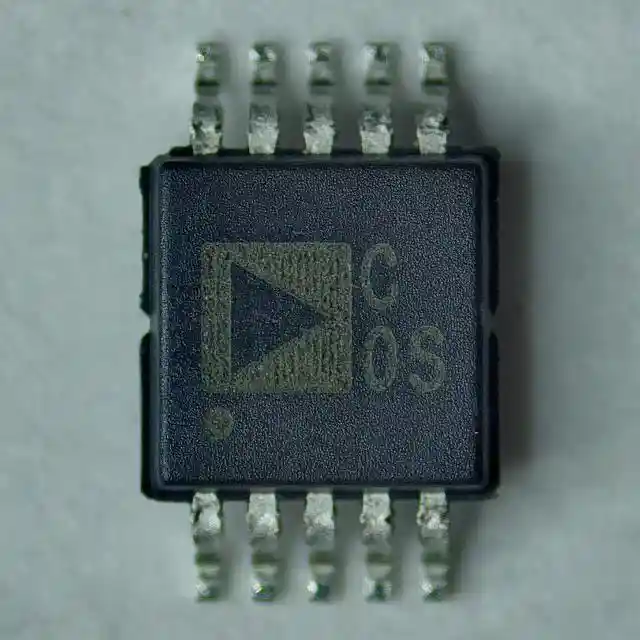
AD7790BRMZ-REEL datasheet
AD7790BRMZ-REEL pdf
AD7790BRMZ-REEL distributor
AD7790BRMZ-REEL manufacturer
AD7790BRMZ-REEL supplier
AD7790BRMZ-REEL price
AD7790BRMZ-REEL specification
AD7790BRMZ-REEL wholesale
AD7790BRMZ-REEL package
AD7790BRMZ-REEL Analog Devices Inc.
AD7790BRMZ-REEL







$1.93
Price update:a months ago







Analog Devices Inc.
Analog Devices (NASDAQ: ADI) leads in crafting high-performance analog, mixed-signal, and digital signal processing integrated circuits. For decades, they've tackled signal processing challenges across global electronics. With over 100,000 clients, their products convert real-world phenomena into electrical signals. Merged with Maxim Integrated, they offer top-tier mixed-signal and power management technologies, solving complex problems from DC to 100 GHz and sensor to cloud.
View All Product from Analog Devices Inc.Popular Products

The AD7790/AD7791 are low-power, complete analog front ends for low frequency measurement applications. The device consumes 65 µA of current typically when operated with a 3 V power supply and 75 µA typical when operated with a 5 V power supply with the buffer disabled. The AD7791 contains a 24-bit S-D ADC with one differential input, which can be buffered or unbuffered. The AD7790BRMZ-REEL is a 16-bit version of the AD7791. The AD7790BRMZ-REEL has a peak-to-peak resolution of 16 bits at the default output data rate of 16.6 Hz while the AD7789 has a peak to peak resolution of 19 bits, which is equivalent to an effective resolution of 21.5 bits at this output data rate.
The device operates from an internal clock. Therefore, the user does not have to supply a clock source to the device. The output data rate from the part is software programmable, allowing rates from 9.5 Hz to 120 Hz. The p-p resolution from the part varies with the programmed output data rate. With an output data rate of 16.6 Hz, simultaneous 50 Hz/60 Hz rejection is achieved. Power supply monitoring is also included.
The part can be used in single conversion mode whereby the device powers up, performs a single conversion and then returns to powerdown mode. Alternatively, it can be operated in continuous mode. In continuous conversion mode, the part can be configured to continuously read i.e. the conversions are placed on the serial bus automatically as soon as a conversion is complete (the user does not need to write to the ADC to read the data), assuming that the serial clock is applied to the device.
The AD7790/AD7791 is housed in a 10-lead MSOP package.
Feature
- Power- Supply: 2.5 V to 5.25 V operation- Normal: 75 µA maximum- Power-down: 1 µA maximum
- 16-bit p-p resolution
- Integral nonlinearity: 3.5 ppm typical
- Simultaneous 50 Hz and 60 Hz rejection
- Internal clock oscillator
- Programmable gain amplifier
- Rail-to-rail input buffer
- VDD monitor channel
- Temperature range: –40°C to +105°C
- 10-lead MSOP
- 1. Shipping starts at $40, but prices may vary for certain countries like South Africa, Brazil, India, Pakistan, Israel, etc.
- 2. The basic freight for packages ≤0.5kg or equivalent volume is influenced by the time zone and country.
- 1. Our products are currently shipped using DHL, SF, and UPS. For low quantities, FedEx is the chosen carrier.
- 1. Once shipped, the estimated delivery time is contingent on the selected shipping method.






SZC's logistic and inventory management programs bring you unmatched success.
Our strategic hubs located in Futian, Longgang, Nanshan offer a variety of customized programs designed for specific customers' needs.
We also have long-standing relationships with major logistics carriers and provide flexible solutions to meet your individual requirements.
1. Every electronic component you purchase from us comes with a 365-Day Warranty. We stand behind the quality of our products.
2. Should you receive any item that isn't in perfect condition, we are committed to arranging a refund or replacement responsibly. Please note that items must be in their original condition for these options to be available.
FAQs:Q: How does SZComponents ensure that AD7790BRMZ-REEL is genuinely manufactured or distributed by ?
A: Our professional business development department conducts rigorous testing and verification of the qualifications of original manufacturers and agents of . All suppliers must undergo and pass our qualification review before they are allowed to list their AD7790BRMZ-REEL devices on our platform. We prioritize the sourcing channels and quality of AD7790BRMZ-REEL products above everything else, ensuring thorough supplier audits so you can make your purchase with utmost confidence.
Q: Where can I find detailed information about AD7790BRMZ-REEL chips, including original manufacturer details, Analog to Digital Converters (ADC) application, and images?
A: Utilize SZComponents's intelligent search engine, filter by the Analog to Digital Converters (ADC) category, or navigate through the 's brand page for comprehensive information.
Q: Are the prices and stock levels of 's AD7790BRMZ-REEL shown on the platform accurate?
A: Due to significant fluctuations in 's inventory, real-time updates are challenging. However, we ensure periodic updates within 24 hours. We recommend confirming your AD7790BRMZ-REEL order with a SZComponents sales representative or through our online customer service before proceeding with payment.
Q: What payment methods are accepted by SZComponents?
A: We accept various payment methods, including TT Bank, PayPal, Credit Card, Western Union, and Escrow.
Q: How are shipping arrangements made, and how can I track my package?
A: Customers can select from industry-leading freight companies like DHL, FedEx, UPS, TNT, and Registered Mail. Once your order is ready for shipment, our sales team will inform you about the shipping details and provide a tracking number. Note that tracking information might take up to 24 hours to appear. Typically, Express delivery takes 3-5 days, while Registered Mail requires 25-60 days.
Q: What is the process for returns or replacements of AD7790BRMZ-REEL?
A: We conduct a Pre-Shipment Inspection (PSI) on randomly selected batches from your order to ensure quality before shipment. We will accept returns or replacements of the AD7790BRMZ-REEL if it does not meet your expectations under the following conditions:
- Issues such as incorrect quantities, delivery of wrong items, or obvious external defects are acknowledged by us.
- We are informed about the defects within 90 days from the delivery date.
- The AD7790BRMZ-REEL remains unused and in its original packaging.
- To initiate a return, please:
- Inform us within the 90-day period.
- Obtain a Request for Return Authorization.
- For more details, refer to our Return & Change Policy.
Q: How can I get support or request datasheets and pin diagrams for AD7790BRMZ-REEL?
A: For any After-Sales service, including datasheets and pin diagrams for AD7790BRMZ-REEL, feel free to contact us at [email protected]
Q: How can I contact SZComponents? Please provide specific contact methods.
A: Reach out to us by clicking the customer service button at the bottom right corner of our site, submitting an RFQ directly, or using the 'Contact Us' link at the top of our page to email or call us. We guarantee a response to your inquiries within 24 hours.
Q: How does SZComponents ensure that AD7790BRMZ-REEL is genuinely manufactured or distributed by ?
A: Our professional business development department conducts rigorous testing and verification of the qualifications of original manufacturers and agents of . All suppliers must undergo and pass our qualification review before they are allowed to list their AD7790BRMZ-REEL devices on our platform. We prioritize the sourcing channels and quality of AD7790BRMZ-REEL products above everything else, ensuring thorough supplier audits so you can make your purchase with utmost confidence.
Q: Where can I find detailed information about AD7790BRMZ-REEL chips, including original manufacturer details, Analog to Digital Converters (ADC) application, and images?
A: Utilize SZComponents's intelligent search engine, filter by the Analog to Digital Converters (ADC) category, or navigate through the 's brand page for comprehensive information.
Q: Are the prices and stock levels of 's AD7790BRMZ-REEL shown on the platform accurate?
A: Due to significant fluctuations in 's inventory, real-time updates are challenging. However, we ensure periodic updates within 24 hours. We recommend confirming your AD7790BRMZ-REEL order with a SZComponents sales representative or through our online customer service before proceeding with payment.
Q: What payment methods are accepted by SZComponents?
A: We accept various payment methods, including TT Bank, PayPal, Credit Card, Western Union, and Escrow.
Q: How are shipping arrangements made, and how can I track my package?
A: Customers can select from industry-leading freight companies like DHL, FedEx, UPS, TNT, and Registered Mail. Once your order is ready for shipment, our sales team will inform you about the shipping details and provide a tracking number. Note that tracking information might take up to 24 hours to appear. Typically, Express delivery takes 3-5 days, while Registered Mail requires 25-60 days.
Q: What is the process for returns or replacements of AD7790BRMZ-REEL?
A: We conduct a Pre-Shipment Inspection (PSI) on randomly selected batches from your order to ensure quality before shipment. We will accept returns or replacements of the AD7790BRMZ-REEL if it does not meet your expectations under the following conditions:
- Issues such as incorrect quantities, delivery of wrong items, or obvious external defects are acknowledged by us.
- We are informed about the defects within 90 days from the delivery date.
- The AD7790BRMZ-REEL remains unused and in its original packaging.
- To initiate a return, please:
- Inform us within the 90-day period.
- Obtain a Request for Return Authorization.
- For more details, refer to our Return & Change Policy.
Q: How can I get support or request datasheets and pin diagrams for AD7790BRMZ-REEL?
A: For any After-Sales service, including datasheets and pin diagrams for AD7790BRMZ-REEL, feel free to contact us at [email protected]
Q: How can I contact SZComponents? Please provide specific contact methods.
A: Reach out to us by clicking the customer service button at the bottom right corner of our site, submitting an RFQ directly, or using the 'Contact Us' link at the top of our page to email or call us. We guarantee a response to your inquiries within 24 hours.
Related Products
| Mfr Part # | Price ($) | Quantity Available | |
|---|---|---|---|
 AD7790BRMZIC ADC 16BIT SIGMA-DELTA 10MSOP | 2.76 |
2000
Marketplace | |
 AD7788BRMIC ADC 16BIT SIGMA-DELTA 10MSOP | 3.03 |
4722
Marketplace | |
 AD7787BRMIC ADC 24BIT SIGMA-DELTA 10MSOP | 4.82 |
3048
Marketplace | |
 AD7788BRMZIC ADC 16BIT SIGMA-DELTA 10MSOP | 4.13 |
1276
Marketplace | |
 AD7789BRMIC ADC 19BIT SIGMA-DELTA 10MSOP | 2.07 |
1
Marketplace | |
 AD7789BRMZIC ADC 19BIT SIGMA-DELTA 10MSOP | 0.96 |
6000
Marketplace |

AD7790BRMZ
IC ADC 16BIT SIGMA-DELTA 10MSOP
2.76 Compare
AD7788BRM
IC ADC 16BIT SIGMA-DELTA 10MSOP
3.03 Compare
AD7787BRM
IC ADC 24BIT SIGMA-DELTA 10MSOP
4.82 Compare
AD7788BRMZ
IC ADC 16BIT SIGMA-DELTA 10MSOP
4.13 Compare
AD7789BRM
IC ADC 19BIT SIGMA-DELTA 10MSOP
2.07 Compare
AD7789BRMZ
IC ADC 19BIT SIGMA-DELTA 10MSOP
0.96 Compare
Product Attributes
| TYPE | DESCRIPTION | Select all |
|---|---|---|
| Voltage - Supply, Analog | 2.5V ~ 5.25V | |
| Number of Bits | 16 | |
| Voltage - Supply, Digital | 2.5V ~ 5.25V | |
| Sampling Rate (Per Second) | 120 | |
| Features | PGA | |
| Number of Inputs | 1 | |
| Operating Temperature | -40°C ~ 105°C | |
| Input Type | Differential | |
| Package / Case | 10-TFSOP, 10-MSOP (0.118", 3.00mm Width) | |
| Data Interface | SPI, DSP | |
| Supplier Device Package | 10-MSOP | |
| Configuration | ADC | |
| Mounting Type | Surface Mount | |
| Number of A/D Converters | 1 | |
| Architecture | Sigma-Delta | |
| Package | Tape & Reel (TR) | |
| Reference Type | External | |
| Product Status | Active |
Blog
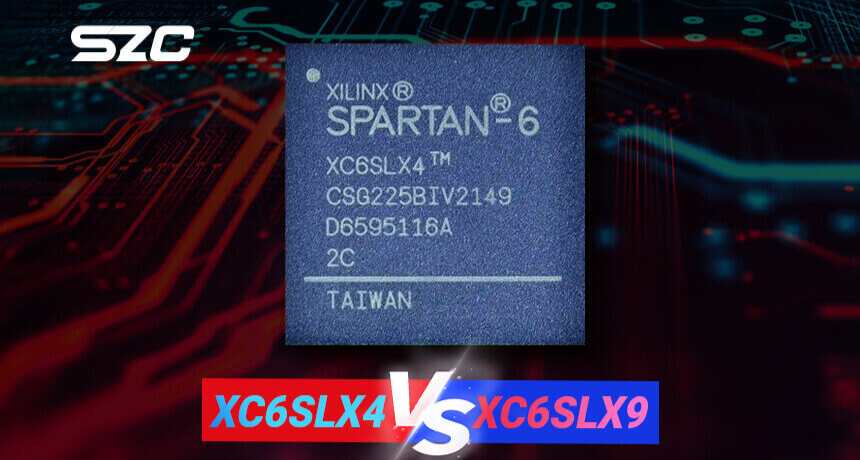 XC6SLX4 vs XC6SLX9: Which One is Better?Harnessing the Potential of XC6SLX4 and XC6SLX9 FPGAs for Enhanced Performance and Versatility.
XC6SLX4 vs XC6SLX9: Which One is Better?Harnessing the Potential of XC6SLX4 and XC6SLX9 FPGAs for Enhanced Performance and Versatility. Top 10 Microcontroller Manufacturers in the USAExplore top 10 USA's microcontroller innovation, revealing top players shaping electronics. Buckle up for a game-changing journey!
Top 10 Microcontroller Manufacturers in the USAExplore top 10 USA's microcontroller innovation, revealing top players shaping electronics. Buckle up for a game-changing journey! Film vs. Ceramic: Choosing the Right Capacitor for YouExplore the world of electronic components as we demystify film and ceramic capacitors. Buckle up for a captivating journey through the currents of capacitance in this tech enthusiast's guide.
Film vs. Ceramic: Choosing the Right Capacitor for YouExplore the world of electronic components as we demystify film and ceramic capacitors. Buckle up for a captivating journey through the currents of capacitance in this tech enthusiast's guide. Explore Top 10 RF Mixer Manufacturers in the USAReady to discover the USA's top 10 RF mixer makers? Join us for an electrifying trip through innovation.
Explore Top 10 RF Mixer Manufacturers in the USAReady to discover the USA's top 10 RF mixer makers? Join us for an electrifying trip through innovation. SZComponents Wins "International Potential Star Distributor" AwardJoin us in celebrating SZComponents' remarkable win as the "International Potential Star Distributor" and explore their journey to success.
SZComponents Wins "International Potential Star Distributor" AwardJoin us in celebrating SZComponents' remarkable win as the "International Potential Star Distributor" and explore their journey to success.
 Unveiling the Future: The Surge of Microcontrollers in 2024In the dynamic world of electronic components, microcontrollers stand out as a testament to innovation and versatility. As we edge closer to 2024, the landscape for microcontrollers and semiconductors, spearheaded by giants like STMicroelectronics, Texas Instruments, and Microchip, is set for remarkable transformation.
Unveiling the Future: The Surge of Microcontrollers in 2024In the dynamic world of electronic components, microcontrollers stand out as a testament to innovation and versatility. As we edge closer to 2024, the landscape for microcontrollers and semiconductors, spearheaded by giants like STMicroelectronics, Texas Instruments, and Microchip, is set for remarkable transformation. Microcontrollers vs. Microprocessors: Unveiling the Core Differences for Embedded Systems EngineeringSeasoned professionals in the realm of embedded systems engineering and product development within the electronics sphere often grapple with distinguishing between microcontrollers and microprocessors. Despite their foundational role in the design and fabrication of a myriad of electronic gadgets, understanding their unique functionalities based on mere definitions can be challenging:
Microcontrollers vs. Microprocessors: Unveiling the Core Differences for Embedded Systems EngineeringSeasoned professionals in the realm of embedded systems engineering and product development within the electronics sphere often grapple with distinguishing between microcontrollers and microprocessors. Despite their foundational role in the design and fabrication of a myriad of electronic gadgets, understanding their unique functionalities based on mere definitions can be challenging: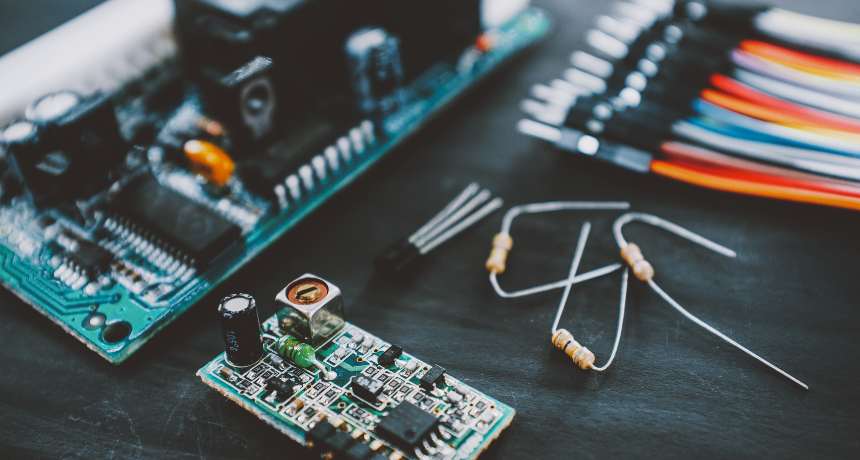 A Deep Dive into the Global Ceramic Capacitors MarketJoin us in exploring the emerging subplot of environmental consciousness within the global ceramic capacitors market.
A Deep Dive into the Global Ceramic Capacitors MarketJoin us in exploring the emerging subplot of environmental consciousness within the global ceramic capacitors market.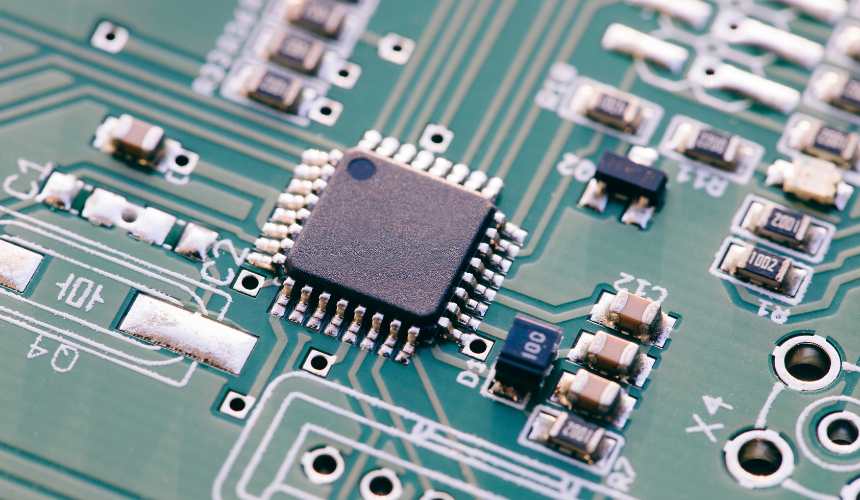 Mastering Current Measurement with MicrocontrollersUnlock precise current measurement secrets with Microcontrollers! Conquer challenges, meet superhero solutions, and revolutionize accuracy with on-chip Analog Core Independent Peripherals (CIPs).
Mastering Current Measurement with MicrocontrollersUnlock precise current measurement secrets with Microcontrollers! Conquer challenges, meet superhero solutions, and revolutionize accuracy with on-chip Analog Core Independent Peripherals (CIPs).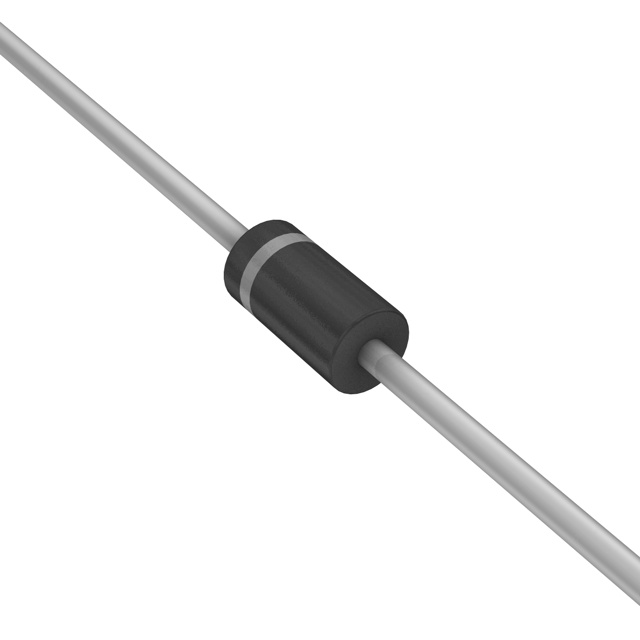 What is a Rectifier Diode: A Guide to BeginnersMeet the unsung heroes of electronics—Rectifier Diodes! Explore their magic, applications, and join the behind-the-scenes adventure into gadget power.
What is a Rectifier Diode: A Guide to BeginnersMeet the unsung heroes of electronics—Rectifier Diodes! Explore their magic, applications, and join the behind-the-scenes adventure into gadget power.
 FPGAs Face-Off: XC6SLX16 vs XC6SLX25Unlock the secrets of FPGAs with our quick guide! XC6SLX16 or XC6SLX25—Which one holds the key to your next tech adventure? Click now to explore the world of programmable possibilities!
FPGAs Face-Off: XC6SLX16 vs XC6SLX25Unlock the secrets of FPGAs with our quick guide! XC6SLX16 or XC6SLX25—Which one holds the key to your next tech adventure? Click now to explore the world of programmable possibilities!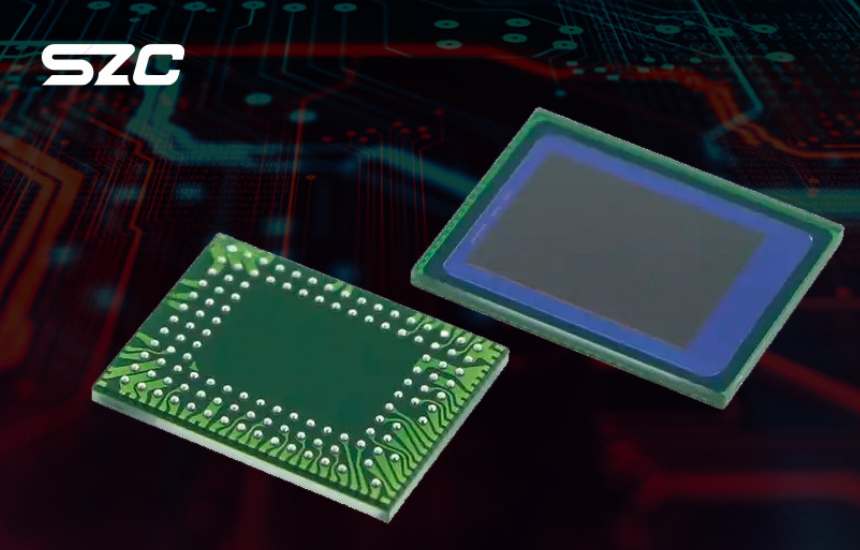 Enhancing Road Safety with onsemi's Advanced Image SensorsMeet onsemi's AR0220AT, a night-savvy game-changer in Advanced Driver Assistance Systems.
Enhancing Road Safety with onsemi's Advanced Image SensorsMeet onsemi's AR0220AT, a night-savvy game-changer in Advanced Driver Assistance Systems.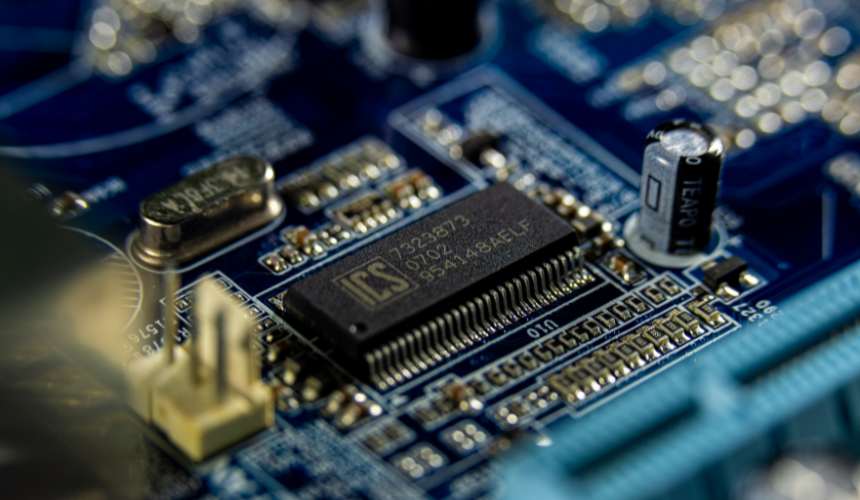 Texas Instruments Picks Lehi, Utah for Cutting-Edge Semiconductor HubTexas Instruments (TI) has chosen Lehi, Utah, as the site for its upcoming 300-millimeter semiconductor wafer fabrication plant (fab).
Texas Instruments Picks Lehi, Utah for Cutting-Edge Semiconductor HubTexas Instruments (TI) has chosen Lehi, Utah, as the site for its upcoming 300-millimeter semiconductor wafer fabrication plant (fab). Thanksgiving Greetings from SZComponentsThank you for being an integral part of the SZComponents family. Happy Thanksgiving!
Thanksgiving Greetings from SZComponentsThank you for being an integral part of the SZComponents family. Happy Thanksgiving!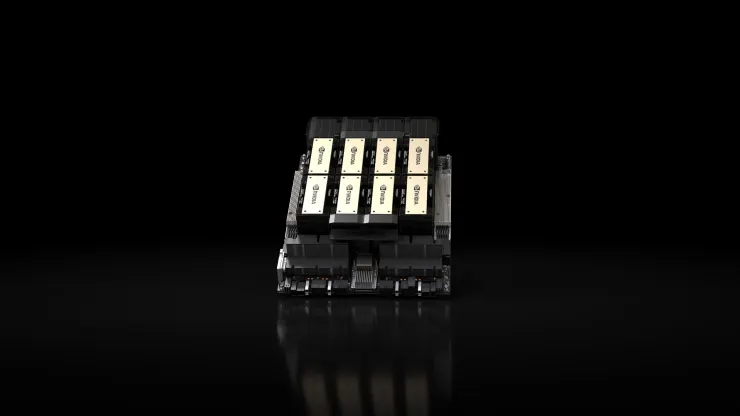 Discover the power of Nvidia H200 for AI model trainingDiscover the cutting-edge possibilities of AI training with Nvidia's H200 chip. Unlock the ultimate potential for your AI models and revolutionize your work.
Discover the power of Nvidia H200 for AI model trainingDiscover the cutting-edge possibilities of AI training with Nvidia's H200 chip. Unlock the ultimate potential for your AI models and revolutionize your work.
 XC6SLX4 vs XC6SLX9: Which One is Better?Harnessing the Potential of XC6SLX4 and XC6SLX9 FPGAs for Enhanced Performance and Versatility.
XC6SLX4 vs XC6SLX9: Which One is Better?Harnessing the Potential of XC6SLX4 and XC6SLX9 FPGAs for Enhanced Performance and Versatility. Top 10 Microcontroller Manufacturers in the USAExplore top 10 USA's microcontroller innovation, revealing top players shaping electronics. Buckle up for a game-changing journey!
Top 10 Microcontroller Manufacturers in the USAExplore top 10 USA's microcontroller innovation, revealing top players shaping electronics. Buckle up for a game-changing journey! Film vs. Ceramic: Choosing the Right Capacitor for YouExplore the world of electronic components as we demystify film and ceramic capacitors. Buckle up for a captivating journey through the currents of capacitance in this tech enthusiast's guide.
Film vs. Ceramic: Choosing the Right Capacitor for YouExplore the world of electronic components as we demystify film and ceramic capacitors. Buckle up for a captivating journey through the currents of capacitance in this tech enthusiast's guide. Explore Top 10 RF Mixer Manufacturers in the USAReady to discover the USA's top 10 RF mixer makers? Join us for an electrifying trip through innovation.
Explore Top 10 RF Mixer Manufacturers in the USAReady to discover the USA's top 10 RF mixer makers? Join us for an electrifying trip through innovation. SZComponents Wins "International Potential Star Distributor" AwardJoin us in celebrating SZComponents' remarkable win as the "International Potential Star Distributor" and explore their journey to success.
SZComponents Wins "International Potential Star Distributor" AwardJoin us in celebrating SZComponents' remarkable win as the "International Potential Star Distributor" and explore their journey to success.
 Unveiling the Future: The Surge of Microcontrollers in 2024In the dynamic world of electronic components, microcontrollers stand out as a testament to innovation and versatility. As we edge closer to 2024, the landscape for microcontrollers and semiconductors, spearheaded by giants like STMicroelectronics, Texas Instruments, and Microchip, is set for remarkable transformation.
Unveiling the Future: The Surge of Microcontrollers in 2024In the dynamic world of electronic components, microcontrollers stand out as a testament to innovation and versatility. As we edge closer to 2024, the landscape for microcontrollers and semiconductors, spearheaded by giants like STMicroelectronics, Texas Instruments, and Microchip, is set for remarkable transformation. Microcontrollers vs. Microprocessors: Unveiling the Core Differences for Embedded Systems EngineeringSeasoned professionals in the realm of embedded systems engineering and product development within the electronics sphere often grapple with distinguishing between microcontrollers and microprocessors. Despite their foundational role in the design and fabrication of a myriad of electronic gadgets, understanding their unique functionalities based on mere definitions can be challenging:
Microcontrollers vs. Microprocessors: Unveiling the Core Differences for Embedded Systems EngineeringSeasoned professionals in the realm of embedded systems engineering and product development within the electronics sphere often grapple with distinguishing between microcontrollers and microprocessors. Despite their foundational role in the design and fabrication of a myriad of electronic gadgets, understanding their unique functionalities based on mere definitions can be challenging: A Deep Dive into the Global Ceramic Capacitors MarketJoin us in exploring the emerging subplot of environmental consciousness within the global ceramic capacitors market.
A Deep Dive into the Global Ceramic Capacitors MarketJoin us in exploring the emerging subplot of environmental consciousness within the global ceramic capacitors market. Mastering Current Measurement with MicrocontrollersUnlock precise current measurement secrets with Microcontrollers! Conquer challenges, meet superhero solutions, and revolutionize accuracy with on-chip Analog Core Independent Peripherals (CIPs).
Mastering Current Measurement with MicrocontrollersUnlock precise current measurement secrets with Microcontrollers! Conquer challenges, meet superhero solutions, and revolutionize accuracy with on-chip Analog Core Independent Peripherals (CIPs). What is a Rectifier Diode: A Guide to BeginnersMeet the unsung heroes of electronics—Rectifier Diodes! Explore their magic, applications, and join the behind-the-scenes adventure into gadget power.
What is a Rectifier Diode: A Guide to BeginnersMeet the unsung heroes of electronics—Rectifier Diodes! Explore their magic, applications, and join the behind-the-scenes adventure into gadget power.
 FPGAs Face-Off: XC6SLX16 vs XC6SLX25Unlock the secrets of FPGAs with our quick guide! XC6SLX16 or XC6SLX25—Which one holds the key to your next tech adventure? Click now to explore the world of programmable possibilities!
FPGAs Face-Off: XC6SLX16 vs XC6SLX25Unlock the secrets of FPGAs with our quick guide! XC6SLX16 or XC6SLX25—Which one holds the key to your next tech adventure? Click now to explore the world of programmable possibilities! Enhancing Road Safety with onsemi's Advanced Image SensorsMeet onsemi's AR0220AT, a night-savvy game-changer in Advanced Driver Assistance Systems.
Enhancing Road Safety with onsemi's Advanced Image SensorsMeet onsemi's AR0220AT, a night-savvy game-changer in Advanced Driver Assistance Systems. Texas Instruments Picks Lehi, Utah for Cutting-Edge Semiconductor HubTexas Instruments (TI) has chosen Lehi, Utah, as the site for its upcoming 300-millimeter semiconductor wafer fabrication plant (fab).
Texas Instruments Picks Lehi, Utah for Cutting-Edge Semiconductor HubTexas Instruments (TI) has chosen Lehi, Utah, as the site for its upcoming 300-millimeter semiconductor wafer fabrication plant (fab). Thanksgiving Greetings from SZComponentsThank you for being an integral part of the SZComponents family. Happy Thanksgiving!
Thanksgiving Greetings from SZComponentsThank you for being an integral part of the SZComponents family. Happy Thanksgiving! Discover the power of Nvidia H200 for AI model trainingDiscover the cutting-edge possibilities of AI training with Nvidia's H200 chip. Unlock the ultimate potential for your AI models and revolutionize your work.
Discover the power of Nvidia H200 for AI model trainingDiscover the cutting-edge possibilities of AI training with Nvidia's H200 chip. Unlock the ultimate potential for your AI models and revolutionize your work.
 XC6SLX4 vs XC6SLX9: Which One is Better?Harnessing the Potential of XC6SLX4 and XC6SLX9 FPGAs for Enhanced Performance and Versatility.
XC6SLX4 vs XC6SLX9: Which One is Better?Harnessing the Potential of XC6SLX4 and XC6SLX9 FPGAs for Enhanced Performance and Versatility. Top 10 Microcontroller Manufacturers in the USAExplore top 10 USA's microcontroller innovation, revealing top players shaping electronics. Buckle up for a game-changing journey!
Top 10 Microcontroller Manufacturers in the USAExplore top 10 USA's microcontroller innovation, revealing top players shaping electronics. Buckle up for a game-changing journey! Film vs. Ceramic: Choosing the Right Capacitor for YouExplore the world of electronic components as we demystify film and ceramic capacitors. Buckle up for a captivating journey through the currents of capacitance in this tech enthusiast's guide.
Film vs. Ceramic: Choosing the Right Capacitor for YouExplore the world of electronic components as we demystify film and ceramic capacitors. Buckle up for a captivating journey through the currents of capacitance in this tech enthusiast's guide. Explore Top 10 RF Mixer Manufacturers in the USAReady to discover the USA's top 10 RF mixer makers? Join us for an electrifying trip through innovation.
Explore Top 10 RF Mixer Manufacturers in the USAReady to discover the USA's top 10 RF mixer makers? Join us for an electrifying trip through innovation. SZComponents Wins "International Potential Star Distributor" AwardJoin us in celebrating SZComponents' remarkable win as the "International Potential Star Distributor" and explore their journey to success.
SZComponents Wins "International Potential Star Distributor" AwardJoin us in celebrating SZComponents' remarkable win as the "International Potential Star Distributor" and explore their journey to success.
$1.93
Price update:a months ago
Analog Devices Inc.
Analog Devices (NASDAQ: ADI) leads in crafting high-performance analog, mixed-signal, and digital signal processing integrated circuits. For decades, they've tackled signal processing challenges across global electronics. With over 100,000 clients, their products convert real-world phenomena into electrical signals. Merged with Maxim Integrated, they offer top-tier mixed-signal and power management technologies, solving complex problems from DC to 100 GHz and sensor to cloud.
View All Product from Analog Devices Inc.Popular Products
Blog
 XC6SLX4 vs XC6SLX9: Which One is Better?Harnessing the Potential of XC6SLX4 and XC6SLX9 FPGAs for Enhanced Performance and Versatility.
XC6SLX4 vs XC6SLX9: Which One is Better?Harnessing the Potential of XC6SLX4 and XC6SLX9 FPGAs for Enhanced Performance and Versatility. Top 10 Microcontroller Manufacturers in the USAExplore top 10 USA's microcontroller innovation, revealing top players shaping electronics. Buckle up for a game-changing journey!
Top 10 Microcontroller Manufacturers in the USAExplore top 10 USA's microcontroller innovation, revealing top players shaping electronics. Buckle up for a game-changing journey! Film vs. Ceramic: Choosing the Right Capacitor for YouExplore the world of electronic components as we demystify film and ceramic capacitors. Buckle up for a captivating journey through the currents of capacitance in this tech enthusiast's guide.
Film vs. Ceramic: Choosing the Right Capacitor for YouExplore the world of electronic components as we demystify film and ceramic capacitors. Buckle up for a captivating journey through the currents of capacitance in this tech enthusiast's guide. Explore Top 10 RF Mixer Manufacturers in the USAReady to discover the USA's top 10 RF mixer makers? Join us for an electrifying trip through innovation.
Explore Top 10 RF Mixer Manufacturers in the USAReady to discover the USA's top 10 RF mixer makers? Join us for an electrifying trip through innovation. SZComponents Wins "International Potential Star Distributor" AwardJoin us in celebrating SZComponents' remarkable win as the "International Potential Star Distributor" and explore their journey to success.
SZComponents Wins "International Potential Star Distributor" AwardJoin us in celebrating SZComponents' remarkable win as the "International Potential Star Distributor" and explore their journey to success.
 Unveiling the Future: The Surge of Microcontrollers in 2024In the dynamic world of electronic components, microcontrollers stand out as a testament to innovation and versatility. As we edge closer to 2024, the landscape for microcontrollers and semiconductors, spearheaded by giants like STMicroelectronics, Texas Instruments, and Microchip, is set for remarkable transformation.
Unveiling the Future: The Surge of Microcontrollers in 2024In the dynamic world of electronic components, microcontrollers stand out as a testament to innovation and versatility. As we edge closer to 2024, the landscape for microcontrollers and semiconductors, spearheaded by giants like STMicroelectronics, Texas Instruments, and Microchip, is set for remarkable transformation. Microcontrollers vs. Microprocessors: Unveiling the Core Differences for Embedded Systems EngineeringSeasoned professionals in the realm of embedded systems engineering and product development within the electronics sphere often grapple with distinguishing between microcontrollers and microprocessors. Despite their foundational role in the design and fabrication of a myriad of electronic gadgets, understanding their unique functionalities based on mere definitions can be challenging:
Microcontrollers vs. Microprocessors: Unveiling the Core Differences for Embedded Systems EngineeringSeasoned professionals in the realm of embedded systems engineering and product development within the electronics sphere often grapple with distinguishing between microcontrollers and microprocessors. Despite their foundational role in the design and fabrication of a myriad of electronic gadgets, understanding their unique functionalities based on mere definitions can be challenging: A Deep Dive into the Global Ceramic Capacitors MarketJoin us in exploring the emerging subplot of environmental consciousness within the global ceramic capacitors market.
A Deep Dive into the Global Ceramic Capacitors MarketJoin us in exploring the emerging subplot of environmental consciousness within the global ceramic capacitors market. Mastering Current Measurement with MicrocontrollersUnlock precise current measurement secrets with Microcontrollers! Conquer challenges, meet superhero solutions, and revolutionize accuracy with on-chip Analog Core Independent Peripherals (CIPs).
Mastering Current Measurement with MicrocontrollersUnlock precise current measurement secrets with Microcontrollers! Conquer challenges, meet superhero solutions, and revolutionize accuracy with on-chip Analog Core Independent Peripherals (CIPs). What is a Rectifier Diode: A Guide to BeginnersMeet the unsung heroes of electronics—Rectifier Diodes! Explore their magic, applications, and join the behind-the-scenes adventure into gadget power.
What is a Rectifier Diode: A Guide to BeginnersMeet the unsung heroes of electronics—Rectifier Diodes! Explore their magic, applications, and join the behind-the-scenes adventure into gadget power.
 FPGAs Face-Off: XC6SLX16 vs XC6SLX25Unlock the secrets of FPGAs with our quick guide! XC6SLX16 or XC6SLX25—Which one holds the key to your next tech adventure? Click now to explore the world of programmable possibilities!
FPGAs Face-Off: XC6SLX16 vs XC6SLX25Unlock the secrets of FPGAs with our quick guide! XC6SLX16 or XC6SLX25—Which one holds the key to your next tech adventure? Click now to explore the world of programmable possibilities! Enhancing Road Safety with onsemi's Advanced Image SensorsMeet onsemi's AR0220AT, a night-savvy game-changer in Advanced Driver Assistance Systems.
Enhancing Road Safety with onsemi's Advanced Image SensorsMeet onsemi's AR0220AT, a night-savvy game-changer in Advanced Driver Assistance Systems. Texas Instruments Picks Lehi, Utah for Cutting-Edge Semiconductor HubTexas Instruments (TI) has chosen Lehi, Utah, as the site for its upcoming 300-millimeter semiconductor wafer fabrication plant (fab).
Texas Instruments Picks Lehi, Utah for Cutting-Edge Semiconductor HubTexas Instruments (TI) has chosen Lehi, Utah, as the site for its upcoming 300-millimeter semiconductor wafer fabrication plant (fab). Thanksgiving Greetings from SZComponentsThank you for being an integral part of the SZComponents family. Happy Thanksgiving!
Thanksgiving Greetings from SZComponentsThank you for being an integral part of the SZComponents family. Happy Thanksgiving! Discover the power of Nvidia H200 for AI model trainingDiscover the cutting-edge possibilities of AI training with Nvidia's H200 chip. Unlock the ultimate potential for your AI models and revolutionize your work.
Discover the power of Nvidia H200 for AI model trainingDiscover the cutting-edge possibilities of AI training with Nvidia's H200 chip. Unlock the ultimate potential for your AI models and revolutionize your work.
 XC6SLX4 vs XC6SLX9: Which One is Better?Harnessing the Potential of XC6SLX4 and XC6SLX9 FPGAs for Enhanced Performance and Versatility.
XC6SLX4 vs XC6SLX9: Which One is Better?Harnessing the Potential of XC6SLX4 and XC6SLX9 FPGAs for Enhanced Performance and Versatility. Top 10 Microcontroller Manufacturers in the USAExplore top 10 USA's microcontroller innovation, revealing top players shaping electronics. Buckle up for a game-changing journey!
Top 10 Microcontroller Manufacturers in the USAExplore top 10 USA's microcontroller innovation, revealing top players shaping electronics. Buckle up for a game-changing journey! Film vs. Ceramic: Choosing the Right Capacitor for YouExplore the world of electronic components as we demystify film and ceramic capacitors. Buckle up for a captivating journey through the currents of capacitance in this tech enthusiast's guide.
Film vs. Ceramic: Choosing the Right Capacitor for YouExplore the world of electronic components as we demystify film and ceramic capacitors. Buckle up for a captivating journey through the currents of capacitance in this tech enthusiast's guide. Explore Top 10 RF Mixer Manufacturers in the USAReady to discover the USA's top 10 RF mixer makers? Join us for an electrifying trip through innovation.
Explore Top 10 RF Mixer Manufacturers in the USAReady to discover the USA's top 10 RF mixer makers? Join us for an electrifying trip through innovation. SZComponents Wins "International Potential Star Distributor" AwardJoin us in celebrating SZComponents' remarkable win as the "International Potential Star Distributor" and explore their journey to success.
SZComponents Wins "International Potential Star Distributor" AwardJoin us in celebrating SZComponents' remarkable win as the "International Potential Star Distributor" and explore their journey to success.
 Unveiling the Future: The Surge of Microcontrollers in 2024In the dynamic world of electronic components, microcontrollers stand out as a testament to innovation and versatility. As we edge closer to 2024, the landscape for microcontrollers and semiconductors, spearheaded by giants like STMicroelectronics, Texas Instruments, and Microchip, is set for remarkable transformation.
Unveiling the Future: The Surge of Microcontrollers in 2024In the dynamic world of electronic components, microcontrollers stand out as a testament to innovation and versatility. As we edge closer to 2024, the landscape for microcontrollers and semiconductors, spearheaded by giants like STMicroelectronics, Texas Instruments, and Microchip, is set for remarkable transformation. Microcontrollers vs. Microprocessors: Unveiling the Core Differences for Embedded Systems EngineeringSeasoned professionals in the realm of embedded systems engineering and product development within the electronics sphere often grapple with distinguishing between microcontrollers and microprocessors. Despite their foundational role in the design and fabrication of a myriad of electronic gadgets, understanding their unique functionalities based on mere definitions can be challenging:
Microcontrollers vs. Microprocessors: Unveiling the Core Differences for Embedded Systems EngineeringSeasoned professionals in the realm of embedded systems engineering and product development within the electronics sphere often grapple with distinguishing between microcontrollers and microprocessors. Despite their foundational role in the design and fabrication of a myriad of electronic gadgets, understanding their unique functionalities based on mere definitions can be challenging: A Deep Dive into the Global Ceramic Capacitors MarketJoin us in exploring the emerging subplot of environmental consciousness within the global ceramic capacitors market.
A Deep Dive into the Global Ceramic Capacitors MarketJoin us in exploring the emerging subplot of environmental consciousness within the global ceramic capacitors market. Mastering Current Measurement with MicrocontrollersUnlock precise current measurement secrets with Microcontrollers! Conquer challenges, meet superhero solutions, and revolutionize accuracy with on-chip Analog Core Independent Peripherals (CIPs).
Mastering Current Measurement with MicrocontrollersUnlock precise current measurement secrets with Microcontrollers! Conquer challenges, meet superhero solutions, and revolutionize accuracy with on-chip Analog Core Independent Peripherals (CIPs). What is a Rectifier Diode: A Guide to BeginnersMeet the unsung heroes of electronics—Rectifier Diodes! Explore their magic, applications, and join the behind-the-scenes adventure into gadget power.
What is a Rectifier Diode: A Guide to BeginnersMeet the unsung heroes of electronics—Rectifier Diodes! Explore their magic, applications, and join the behind-the-scenes adventure into gadget power.
 FPGAs Face-Off: XC6SLX16 vs XC6SLX25Unlock the secrets of FPGAs with our quick guide! XC6SLX16 or XC6SLX25—Which one holds the key to your next tech adventure? Click now to explore the world of programmable possibilities!
FPGAs Face-Off: XC6SLX16 vs XC6SLX25Unlock the secrets of FPGAs with our quick guide! XC6SLX16 or XC6SLX25—Which one holds the key to your next tech adventure? Click now to explore the world of programmable possibilities! Enhancing Road Safety with onsemi's Advanced Image SensorsMeet onsemi's AR0220AT, a night-savvy game-changer in Advanced Driver Assistance Systems.
Enhancing Road Safety with onsemi's Advanced Image SensorsMeet onsemi's AR0220AT, a night-savvy game-changer in Advanced Driver Assistance Systems. Texas Instruments Picks Lehi, Utah for Cutting-Edge Semiconductor HubTexas Instruments (TI) has chosen Lehi, Utah, as the site for its upcoming 300-millimeter semiconductor wafer fabrication plant (fab).
Texas Instruments Picks Lehi, Utah for Cutting-Edge Semiconductor HubTexas Instruments (TI) has chosen Lehi, Utah, as the site for its upcoming 300-millimeter semiconductor wafer fabrication plant (fab). Thanksgiving Greetings from SZComponentsThank you for being an integral part of the SZComponents family. Happy Thanksgiving!
Thanksgiving Greetings from SZComponentsThank you for being an integral part of the SZComponents family. Happy Thanksgiving! Discover the power of Nvidia H200 for AI model trainingDiscover the cutting-edge possibilities of AI training with Nvidia's H200 chip. Unlock the ultimate potential for your AI models and revolutionize your work.
Discover the power of Nvidia H200 for AI model trainingDiscover the cutting-edge possibilities of AI training with Nvidia's H200 chip. Unlock the ultimate potential for your AI models and revolutionize your work.
 XC6SLX4 vs XC6SLX9: Which One is Better?Harnessing the Potential of XC6SLX4 and XC6SLX9 FPGAs for Enhanced Performance and Versatility.
XC6SLX4 vs XC6SLX9: Which One is Better?Harnessing the Potential of XC6SLX4 and XC6SLX9 FPGAs for Enhanced Performance and Versatility. Top 10 Microcontroller Manufacturers in the USAExplore top 10 USA's microcontroller innovation, revealing top players shaping electronics. Buckle up for a game-changing journey!
Top 10 Microcontroller Manufacturers in the USAExplore top 10 USA's microcontroller innovation, revealing top players shaping electronics. Buckle up for a game-changing journey! Film vs. Ceramic: Choosing the Right Capacitor for YouExplore the world of electronic components as we demystify film and ceramic capacitors. Buckle up for a captivating journey through the currents of capacitance in this tech enthusiast's guide.
Film vs. Ceramic: Choosing the Right Capacitor for YouExplore the world of electronic components as we demystify film and ceramic capacitors. Buckle up for a captivating journey through the currents of capacitance in this tech enthusiast's guide. Explore Top 10 RF Mixer Manufacturers in the USAReady to discover the USA's top 10 RF mixer makers? Join us for an electrifying trip through innovation.
Explore Top 10 RF Mixer Manufacturers in the USAReady to discover the USA's top 10 RF mixer makers? Join us for an electrifying trip through innovation. SZComponents Wins "International Potential Star Distributor" AwardJoin us in celebrating SZComponents' remarkable win as the "International Potential Star Distributor" and explore their journey to success.
SZComponents Wins "International Potential Star Distributor" AwardJoin us in celebrating SZComponents' remarkable win as the "International Potential Star Distributor" and explore their journey to success.
Popular Manufacturers
View all manufactures MorePopular Parts Number
More Electronic Parts More
AD7790BRMZ-REEL
IC ADC 16BIT SIGMA-DELTA 10MSOP
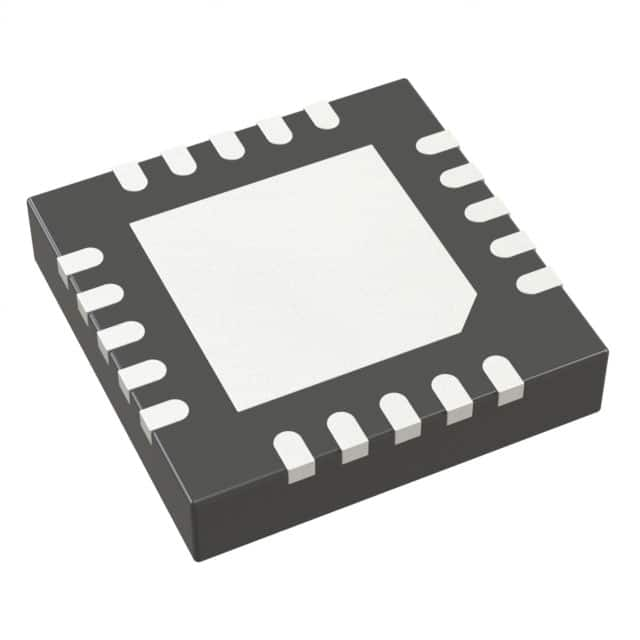
AD7689ACPZ
IC ADC 16BIT SAR 20LFCSP
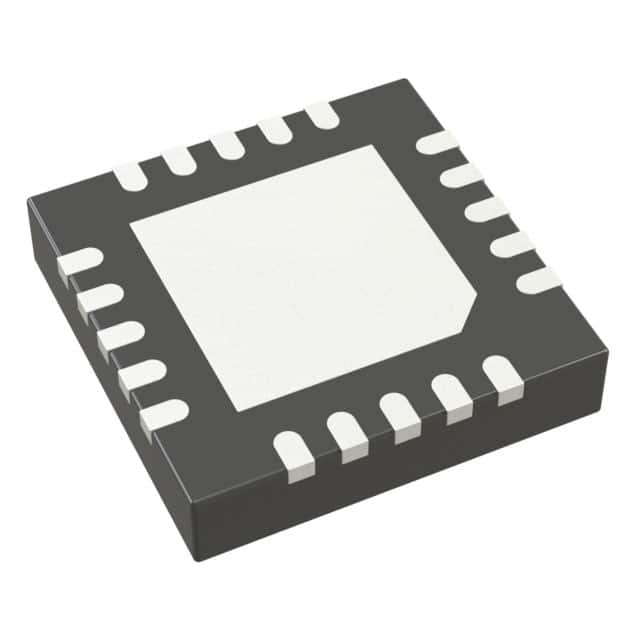
AD7682BCPZ
IC ADC 16BIT SAR 20LFCSP
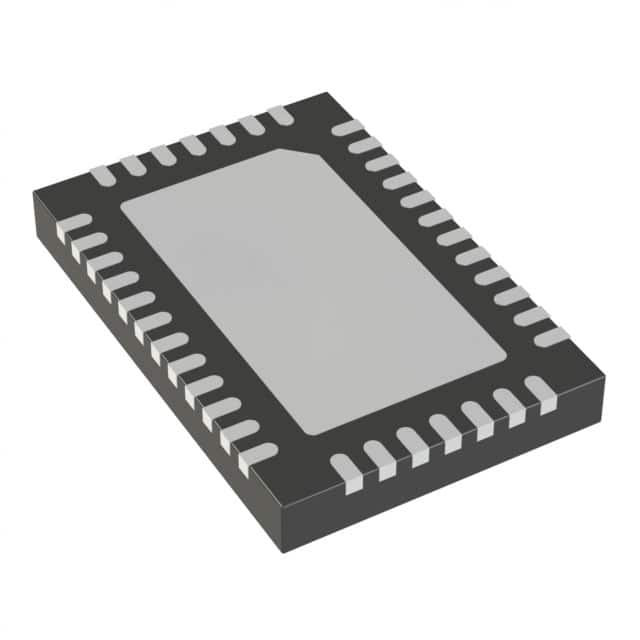
LTC2445CUHF#PBF
IC ADC 24BIT SIGMA-DELTA 38QFN
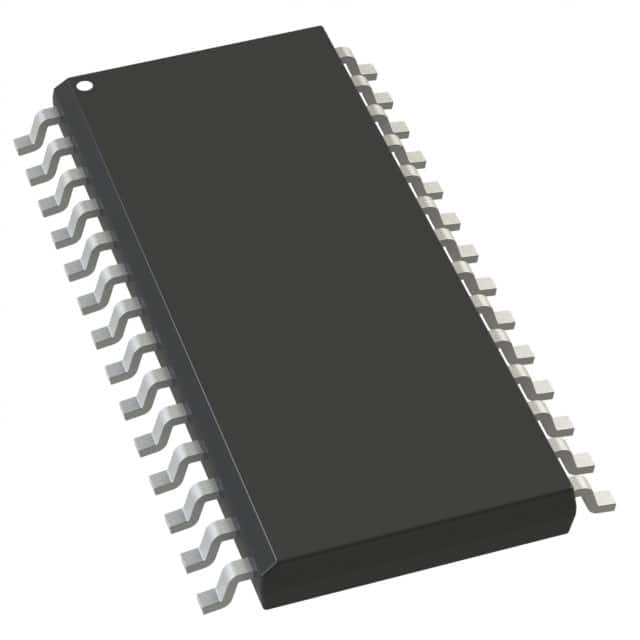
AD9235BRUZ-20
IC ADC 12BIT PIPELINED 28TSSOP
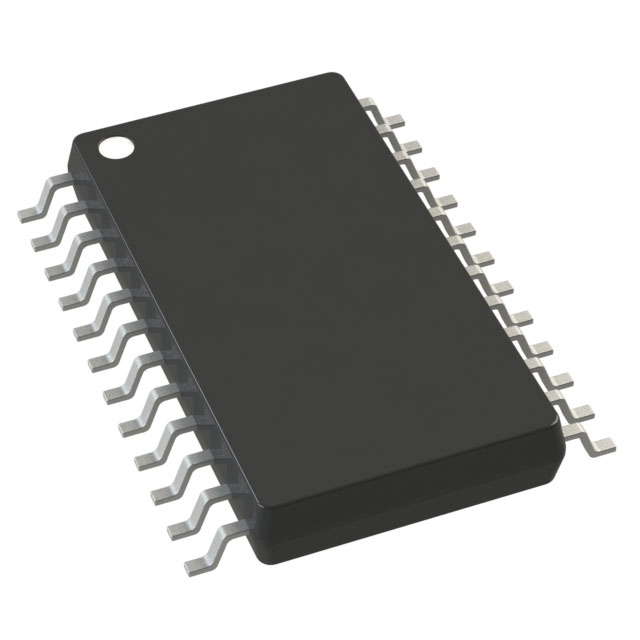
AD7739BRUZ
IC ADC 24BIT SIGMA-DELTA 24TSSOP
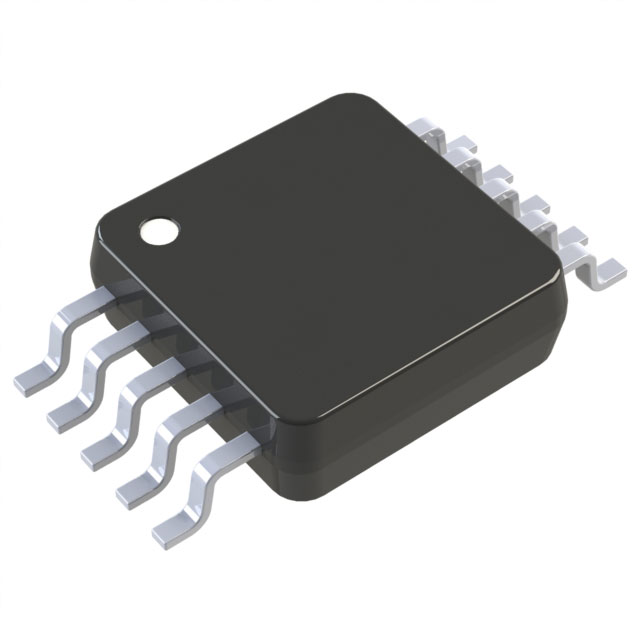
AD7685BRMZ
IC ADC 16BIT SAR 10MSOP
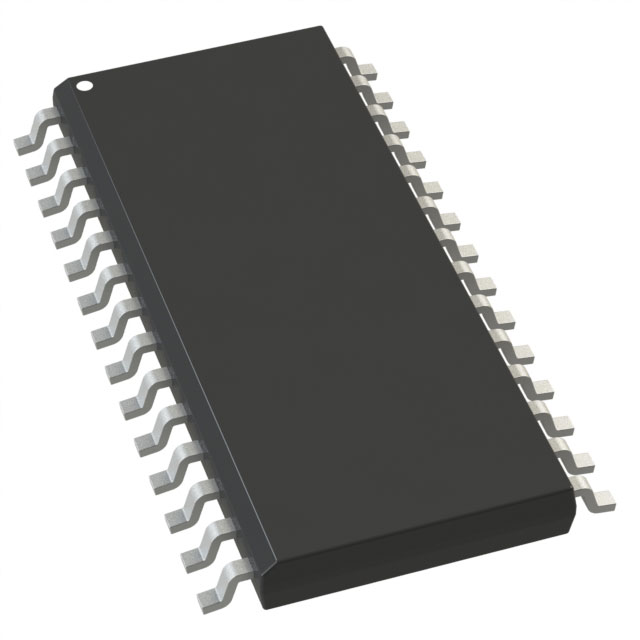
AD7719BRUZ
IC ADC 16/24B SIG-DELTA 28TSSOP
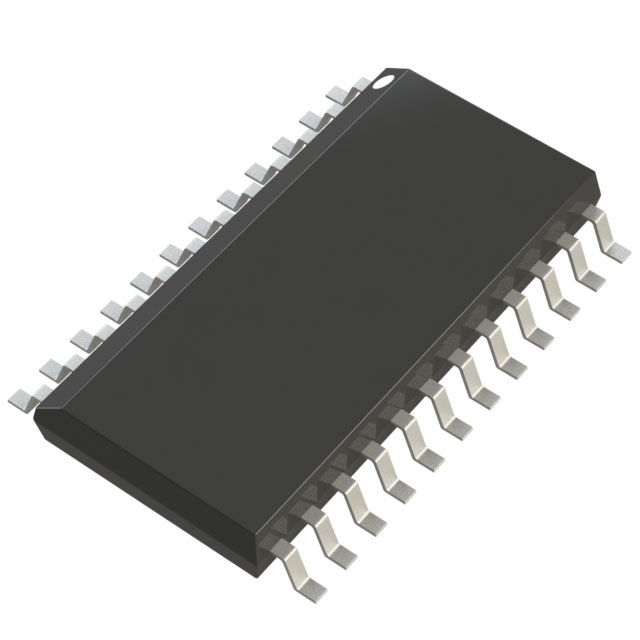
AD7714ARZ-5
IC ADC 24BIT SIGMA-DELTA 24SOIC
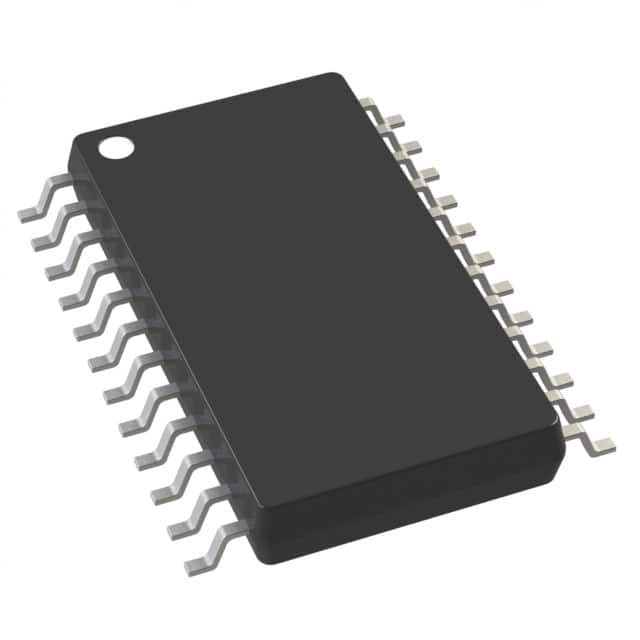
AD7177-2BRUZ
IC ADC 32BIT SIGMA-DELTA 24TSSOP







